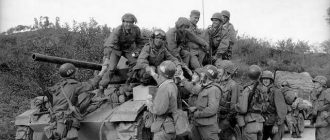Interested in Moo Duk Kwan History Non Korean? Learn about the martial arts technique history of Non Korean Moo Duk Kwan…
Moo Duk Kwan basically means the ‘School of Martial Virtue’ in the Orient. It is divided into two groups known as the Soo Bahk Do and the Taekwondo Moo Duk Kwan. The former was established by the Grand Master Hwang Kee on November 9, 1945. The latter which is Moo Duk Kwan Taekwondo assimilated into the other eight Kwans to establish the well-known Taekwondo.
Meanings of the Terms and Values of Moo Duk Kwan
Moo basically refers to chivalry, military as well as martial where the internal character of the symbol refers to ‘stop’ and the external part of the character refers to ‘weapon’. The term Duk can be translated into virtue, commanding respect, benevolence and goodness.
The first text symbol refers to small steps or happenings while the character on the right of the Oriental word signifies moral. The combination depicts ‘virtuous conduct’. The last character called Kwan in the Korean symbolic alphabet is broken down into a large palace, library or building and the idea graph refers to ‘eat under roof’.
Origin of the Moo Duk Kwan
History records that Hwang Kee was a keen observer and highly passionate about martial arts from his childhood onwards. His inspiration was a man who defended himself by the use of his limbs against a large group of people and that led to his pursuit of training under the old Korean defense tactics, which were comprised of kicking strategies. This was commonly called Tae Kyon.
However when that person refused to mentor him he started practicing on his own at home and developed a very proficient martial arts technique by the age of 21. The Korean Tae Kyon Association disputes this claim.
By the age of 22 he was traveling around Korea. As the majority of Korea was occupied by Japan during World War II he trained under a Chinese martial arts practitioner Yang Kuk Jin. Eventually he combined elements of both Korean and Chinese martial arts and named his method to honor the warriors of ancient Korea by calling it Hwa Soo Do.
Growth of the Moo Duk Kwan
Due to the unique name he had quite a tough time attracting students to his training studio, which was established in 1945. That resulted in a change of name, which eventually led to the current name in an effort to familiarize people with this martial art.
The evolution and development of his training studio led to the combination of martial arts with his original learning. This is reflected in the ultimate selection of a name to represent his tactics, which was Tang Soo Do.
By 1961, however, the Korean government implemented new policy to combine all the martial arts under one regulatory body in order to signify the unity of the Kwans and develop a new and individual Korean martial art. Today the Taekwondo Moo Duk Kwan, Korea, is also known as Moo Duk Hae. It survives only as a social club, but not as an official martial arts system of any kind.
There are many worldwide chapters of the Moo Duk Kwan History Non Korean and affiliates are found across the world and are considered member organizations. They are regulated and mentored by the original grandmasters that have perfected the art over the years.





